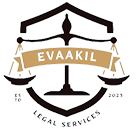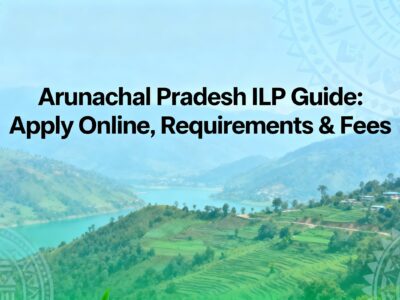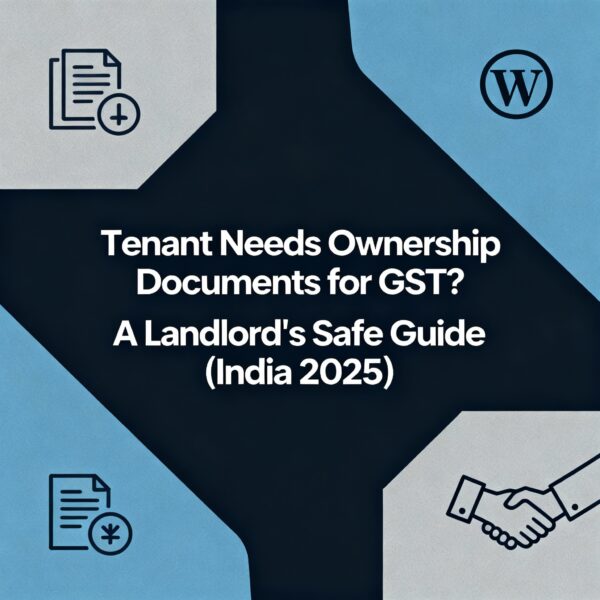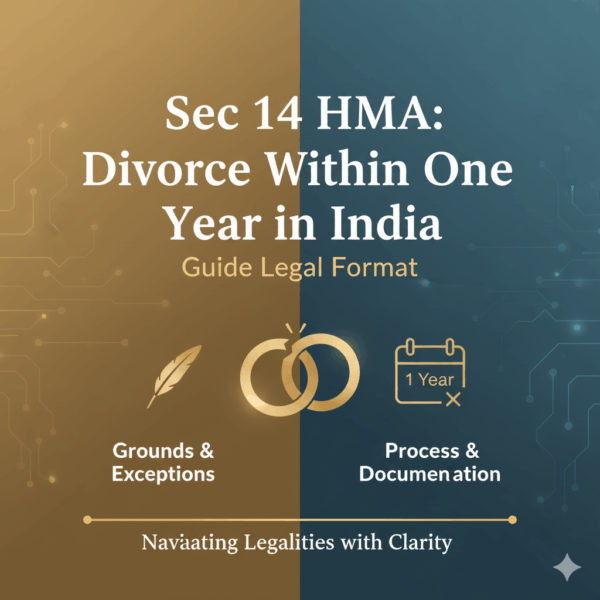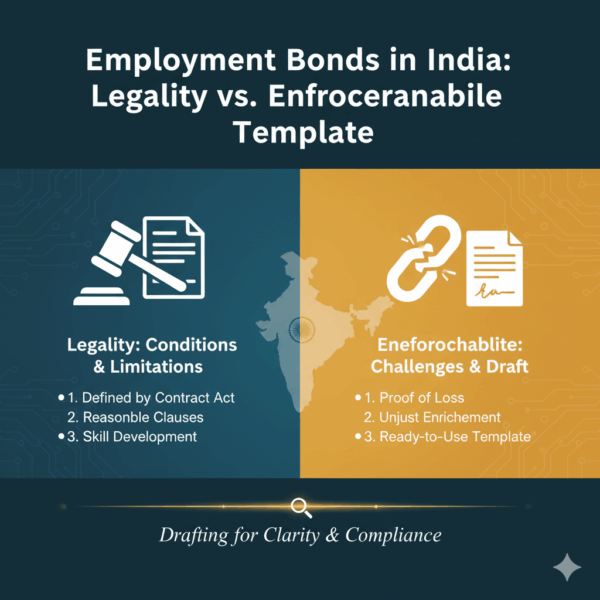A practical guide to the affidavits and permissions required by the Sub-Registrar for land transfers. Updated October 2025.
Affidavit and Compliance Guide: Transferring Land in West Bengal
A practical guide to the affidavits and permissions required by the Sub-Registrar for land transfers. Updated October 2025.
Your Interactive Compliance Path
Buying or selling land in West Bengal involves specific rules. The documents you need depend on the seller, the land, and its location. Use this interactive guide to find your required documents. Click “Yes” or “No” to navigate.
This is a visual guide. See the full Compliance Matrix below for all scenarios.
Your 5-Step Transfer Process
Here is a simplified overview of the property transfer process in West Bengal, helping you understand when these documents are needed.
-
Step 1: Due Diligence & Verification
Before paying, verify the seller’s identity (especially if they are ST) and check the land records (RoR/Porcha) to confirm ownership, land type (agricultural, non-agri), and location (urban or rural).
-
Step 2: Apply for Prior Permission (If Applicable)
Based on Step 1, apply for the required permission. This is the longest part of the process.
• ST Seller: Apply to the Revenue Officer (Sec 14C).
• Urban Agri-Land: Apply to the Collector (Sec 4E). -
Step 3: Draft the Deed and Affidavits
Once permissions are secured (or if not needed), your lawyer will draft the Sale Deed. If in an urban zone, they will also draft the Two-Part ULC Act Affidavit (Form II) to be signed by both you and the seller.
-
Step 4: Stamping and E-Assessment
Pay the required Stamp Duty and Registration Fees online via the e-Nathikaran (GRIPS) portal. The system will generate an e-assessment slip.
-
Step 5: Registration at the Sub-Registrar Office
Attend the Sub-Registrar’s office for your e-appointment. You must present the Sale Deed, e-assessment slip, and all supporting documents (Permissions, Affidavits, ID proofs) for verification and final registration.
Full Compliance Matrix: Find Your Scenario
Use the filters to find the exact documents your transaction requires. This table shows what the Sub-Registrar will ask for before registering your deed.
| Scenario | Seller Identity | Land Type | Location | Primary Document(s) for Sub-Registrar | Legal Authority |
|---|---|---|---|---|---|
| 1 | Scheduled Tribe | Any | Any | 1. Permission from Revenue Officer | WBLR Act, Sec 14C / 14D |
| 2 | General (Non-ST) | Agricultural / Orchard | Rural Area | Standard Registration Docs Only | Registration Act, 1908 |
| 3 | General (Non-ST) | Agricultural / Orchard | Urban Agglomeration | 1. Order in Writing from Collector (or proof of 60-day application expiry) |
WBLR Act, Sec 4E |
| 4 | General (Non-ST) | Non-Agricultural Vacant | Rural Area | Standard Registration Docs Only | Registration Act, 1908 |
| 5 | General (Non-ST) | Non-Agricultural Vacant | Urban Agglomeration | 1. Two-Part Affidavit (Seller & Buyer) | ULC Act, 1976 |
| 6 | Scheduled Tribe | Non-Agricultural Vacant | Urban Agglomeration | 1. Permission from Revenue Officer 2. Two-Part Affidavit (ULC Act) |
WBLR Act, Ch. IIA & ULC Act, 1976 |
| 7 | Scheduled Tribe | Agricultural / Orchard | Urban Agglomeration | 1. Permission from Revenue Officer 2. Order in Writing from Collector |
WBLR Act, Ch. IIA & WBLR Act, Sec 4E |
Visualizing the Compliance Checks
These charts show the breakdown of compliance rules and the documents that appear most frequently in complex transfers.
Compliance Checkpoints
Special Document Frequency
Understanding Each Requirement
Click each section to learn about the specific affidavits and permission orders you might need.
What is an Affidavit and Why is it Needed?
In simple terms, an affidavit is a written statement confirmed by oath. A Notary Public or Oath Commissioner administers the oath. This makes your statement a sworn fact, and you are legally responsible for its truth.
During a land transfer, the Sub-Registrar (the government official who registers the sale) may ask for an affidavit. This document serves as a formal record that you (the buyer or seller) are following specific state laws. It shifts the burden of proof to you. By signing, you swear that your transaction is legal. This protects the registering authority and places the legal responsibility on the parties involved.
West Bengal’s Unique Land Laws
West Bengal’s land laws are more complex than most of India. This is for two main reasons:
- Urban Land (Ceiling and Regulation) Act, 1976 (ULC Act): Most states cancelled this law. West Bengal did not. This ULC Act remains active in the state’s “urban agglomerations” (Kolkata, Asansol, Durgapur). It puts a limit (a “ceiling”) on how much vacant urban land one person can own, reported to be around 500 square meters.
- West Bengal Land Reforms Act, 1955 (WBLR Act): This is the state’s main land law. It sets its own ceiling limits, mostly for agricultural land. It also gives the Sub-Registrar special powers to stop a registration if it breaks certain rules.
These two laws overlap. The Sub-Registrar must act as a gatekeeper to enforce both, which is why the requirements are so specific.
Requirement 1: The ULC Act Affidavit (Scenario 5)
Applies To: Non-Agricultural Vacant Land in an Urban Agglomeration.
This is the most common “affidavit” people talk about. If you are buying or selling vacant (non-agricultural) land in Kolkata, Asansol, or Durgapur, you need this document. It is a single affidavit with two parts, sworn before a Notary.
- Part I (Seller’s Affidavit): The seller swears that the land being sold is not “surplus land” under the ULC Act. They also acknowledge that they are still liable if their statement is later found to be false.
- Part II (Buyer’s Affidavit): The buyer swears that *after* this purchase, their total land holding will *still* be within the ceiling limit.
This document ensures both parties are compliant with the 1976 ceiling law. See the template for this affidavit in the section below.
Requirement 2: The Collector’s Order (Scenario 3)
Applies To: Agricultural Land in an Urban Agglomeration.
This scenario often causes confusion. If you are transferring agricultural land *inside* an urban zone (like Kolkata, Asansol, Durgapur), you need more than an affidavit. Section 4E of the WBLR Act blocks this transfer.
To register the sale, you must first get a **”prior permission in writing of the Collector.”**
- You must apply to the District Collector for permission. Your application will state the purpose of the purchase.
- The Sub-Registrar is legally forbidden to register the deed *unless* you produce this permission order.
- The 60-Day Rule: The law provides a protection. If the Collector does not give a decision (yes or no) within 60 days of your application, you can legally register the deed by showing your dated application receipt.
Requirement 3: The Revenue Officer’s Permission (Scenario 1)
Applies To: Any Land Sold by a Scheduled Tribe (ST) Member.
This is the most strict rule. Chapter IIA of the WBLR Act protects land owned by Scheduled Tribe members. The law states that any transfer of land from an ST owner is “void” unless it follows very specific rules.
- An ST owner can sell to another ST member.
- A sale to a **non-ST person** is only possible with the **”previous permission, in writing, of the Revenue Officer.”**
- The Sub-Registrar is legally obligated to stop the registration if this permission is not attached. They cannot proceed. This rule overrides all others.
Therefore, the first check in any land deal is the seller’s identity. If the seller is an ST member, this permission is the first and most important document to obtain.
Transfer vs. Conversion: A Common Confusion
People often mix up the affidavits for *transfer* and *conversion*. These are two separate processes.
- Transfer (Registration): This is changing the *owner* of the land. It is done at the Sub-Registrar’s office. This is what the ULC Act affidavit (Requirement 1) is for.
- Conversion (Change of Use): This is changing the *purpose* of the land (e.g., from “Agricultural” to “Residential”). This is done through the Land & Land Reforms Officer (DL&LRO) under Section 4C of the WBLR Act, often via the Banglarbhumi portal.
Yes, you need an affidavit to apply for *conversion*, but that is a different document. It is an undertaking that you will use the land for the new purpose. First, you must successfully *transfer* the land into your name before you can apply to *convert* it.
Key Legal Provisions at a Glance
This table breaks down the key laws mentioned so you can understand their purpose quickly.
| Legal Section | What It Does | Simple Explanation |
|---|---|---|
| ULC Act, 1976 | Sets a “ceiling” or limit on how much vacant urban land a person can own. | This is why you must file the affidavit (Form II) in Kolkata, Asansol, or Durgapur—to swear you are not exceeding this limit. |
| WBLR Act, Sec 14C / 14D | Restricts the transfer of land owned by a Scheduled Tribe (ST) member. | You cannot buy land from an ST seller without prior written permission from the Revenue Officer. The Sub-Registrar must stop the sale. |
| WBLR Act, Sec 4E | Restricts the transfer of agricultural land within an Urban Agglomeration. | You cannot buy “agri” land inside the city limits without prior written permission from the Collector (or proof of a 60-day application). |
| WBLR Act, Sec 4C | Governs the *conversion* of land use (e.g., from agri to residential). | This is a separate process from *transfer*. You do this *after* you buy the land, and it requires its own application and affidavit. |
Affidavit Template (Form II – ULC Act Compliance)
This is a specimen format for the affidavit required under Requirement 1 (Scenario 5). This is for transferring non-agricultural vacant land in an urban agglomeration. This template is for informational purposes; always consult a lawyer to draft the final document for your specific case.
Specimen Affidavit (Based on Form II – Seller & Buyer)
BEFORE THE NOTARY PUBLIC AT [LOCATION]
FORM NO. II
PART - I (Affidavit of Transferor/Seller)
We, (1) [Seller 1 Name], (2) [Seller 2 Name], etc.,... residents of [Address], Indian inhabitants, do jointly and severally solemnly affirm and declare as under:—
1. That we are the Owners of the property [Land Type, e.g., "vacant non-agricultural land"] at [Full Address/Mouza/J.L. No.], admeasuring [Area] or thereabouts, which is more particularly described in the Schedule of the Deed of Conveyance dated [Date of Deed] (hereinafter "the said Land").
"Residential Zone"] as per the sanctioned development plan of the [e.g., "Kolkata Municipal Corporation"].
3. That we annex hereto a Certificate from the concerned [Municipal Corporation / Collector] showing the zone of the said Land, marked as Annexure 1.
4. That the said Land is not surplus land under the provisions of the Urban Land (Ceiling and Regulation) Act, 1976.
5. That we understand that the said Land, in spite of its transfer, may be included in our holding... as and when the Competent Authority decides the statement filed by the Landholder... or as and when the issue as to whether there is any surplus land with us... is taken up for consideration.
(Verification and Notarization of Sellers)
...
PART - II (Affidavit of Transferee/Buyer)
We, (1) [Buyer 1 Name] AND (2) [Buyer 2 Name],... residents of [Address], Indian Inhabitants, do jointly and severally solemnly affirm and declare as under:—
1. That by Deed of Conveyance dated [Date of Deed], we have purchased the aforesaid Land as described in the aforesaid affidavit of the Transferors.
2. We state that even after the proposed transfer of the said Land, our total extent of land holdings would be within the ceiling limit as specified under the Urban Land (Ceiling and Regulation) Act, 1976.
3. We undertake to file a statement under Section 15 of the Urban Land (Ceiling and Regulation) Act, 1976, if the said Land is converted to a different use and/or if our total extent of land with us exceeds the ceiling limit.
(Verification and Notarization of Buyers)
...
Interactive Document Checklists
Use these checklists to prepare your file for the Sub-Registrar’s office. (This is for guidance only).
Checklist: Scenario 1 (Seller is Scheduled Tribe)
This is the mandatory first document. The registration is void without it.
Remember, this permission is *in addition* to any other urban land rules that may apply (See Scenarios 6 & 7).
Checklist: Scenario 3 (Non-ST, Urban Agri-Land)
Or, proof that your application is 60+ days old without a response.
Checklist: Scenario 5 (Non-ST, Urban Vacant Land)
Sworn by both Seller (Part I) and Buyer (Part II) before a Notary.
This is the document from the Municipality, referenced *in* the affidavit.
Frequently Asked Questions (FAQ)
What is an “Urban Agglomeration” in West Bengal?
The Urban Land (Ceiling and Regulation) Act, 1976, and the WBLR Act apply to specific “urban agglomerations.” In West Bengal, these are primarily:
- Kolkata Urban Agglomeration
- Asansol Urban Agglomeration
- Durgapur Urban Agglomeration
What happens if I don’t file the correct affidavit or get permission?
The Sub-Registrar is legally obligated to refuse to register your Sale Deed. The WBLR Act specifically forbids them from registering a document that contravenes these sections. Your transaction will be stopped until you produce the correct permission order or affidavit.
Is this process the same in all of India, like Mumbai or Delhi?
No. These specific requirements are unique to West Bengal. The main reason is that West Bengal did not repeal the 1976 Urban Land Ceiling Act, while most other states (like Maharashtra and Gujarat) did. Always check the local state laws for the property you are dealing with.
How do I know if a seller is a member of a Scheduled Tribe?
This is a critical part of the due diligence process. The seller’s identity, including their community or caste, may be mentioned in their identity documents or in the existing land records (Record of Rights). Your lawyer must verify this as the very first step, as it completely changes the legal requirements for the transfer.
